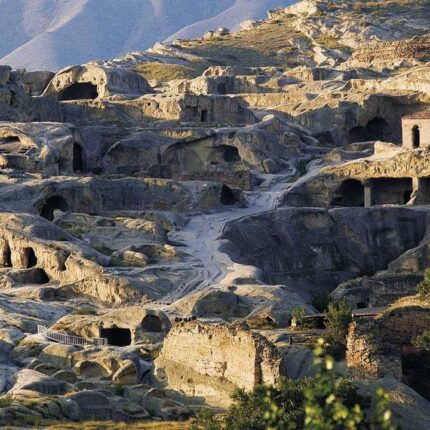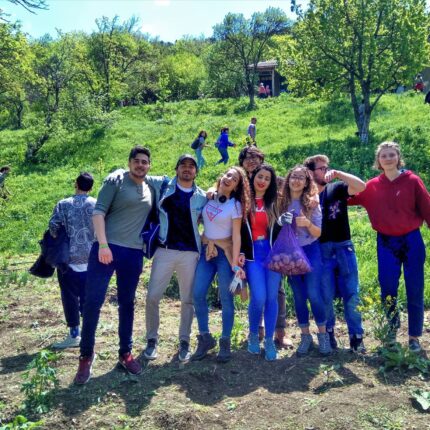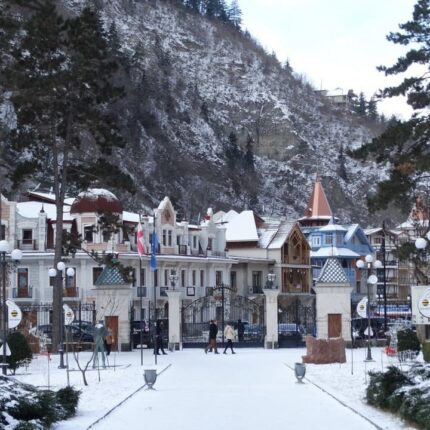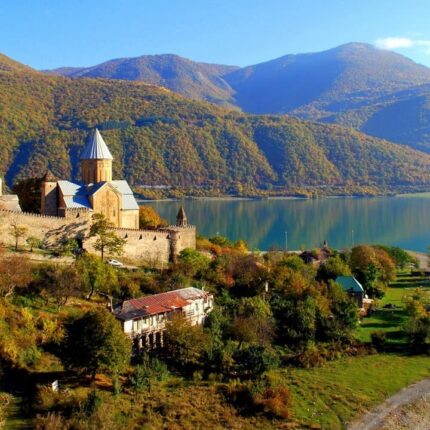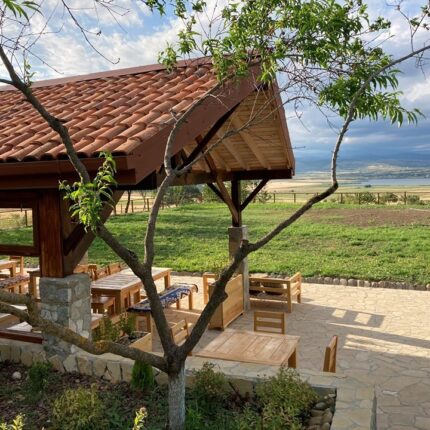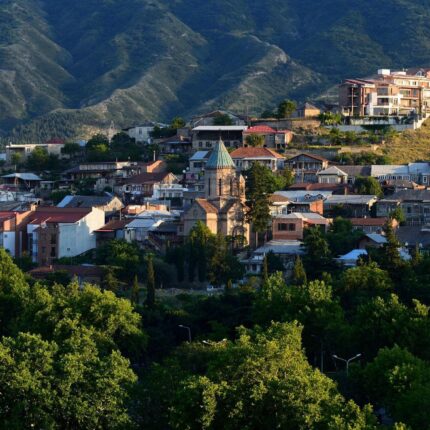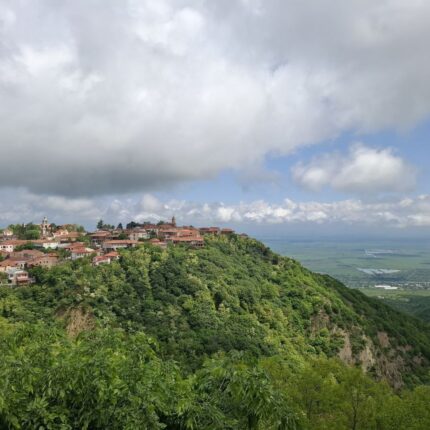Sioni Cathedral, or the Cathedral of Saint Mary of Zion, is a Georgian Orthodox cathedral in Tbilisi. The cathedral was originally built in the 6th and 7th centuries and is home to the sacred cross of St. Nino.
According to the legend, the cross was made from vine branches and bound with the saint’s own hair. Though the real thing is apparently kept inside hidden away in the cathedral, there is a replica of the cross inside the church in a bronze grille.
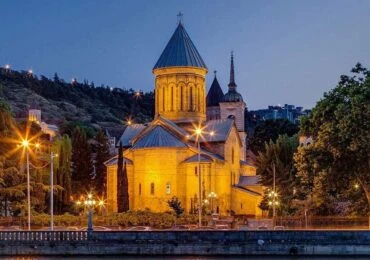
Meaning and history:
The name ‘Cathedral of Saint Mary of Zion’ comes from the historical tradition of naming churches after specific places in the Holy Land (Jerusalem). This one, in particular, was named after Mount Zion in Jerusalem and is commonly known as the “Tbilisi Sion” to distinguish it from other churches across Georgia that bear the name Sioni.
Its origins date back to the 5th century, when King Vakhtang Gorgasali first initiated its construction. Guram, the prince of Iberia (Kartli) continued its construction in the year 575, but it was his successor Adarnase who finally finished it in 639.
However, since then, the cathedral has been destroyed and rebuilt many times.
King David the Builder completely rebuilt it in the 12th century, and some parts the church still date back to that time. The first damage was done in 1226 when the dome was ruined, repaired and then damaged again by Timur (or Tamerlane, a Turco-Mongol conqueror) in 1386. Later, King Alexander I (The Great) repaired this and the church was doing fine until the Persian invasion in 1795.
Under Russian Imperial rule, the cathedral took on a different interior look, but Sioni Cathedral remained functional through the Soviet times and was again renovated from 1980 to 1983.
What’s left of the church is now based on the 13th-century version, with some changes from the 17th to 19th centuries, and is now situated on the historic Sionis Kucha (Sioni Street).
What to see
After going through so much change, the Cathedral’s exterior is modest and fairly simple.
However, it is the inside that matters and where the church truly shines. The interior is a mixture of different periods, where colorful frescoes and icons cover every corner. The door and the marble doorways are also stunning in that they’re decorated with beautiful patterns and many historical symbols.
The Cross of St. Nino, the patron saint of Georgia, who first preached Christianity in Georgia in the early 4th century.
The Sioni Cathedral also serves as a burial ground for many notable religious figures, including the 20th-century Catholicos-Patriarchs of Georgia, and other political figures.
General info
The church is typically open from around 9am till 6pm and there are usually choirs and ceremonies during the weekends in the mornings.
As with most Georgian churches, women are expected to cover their heads with scarves and men are expected not to wear hats or shorts.
You might need at least 30 minutes or so to fully take the church in. There are also other famous landmarks nearby you could go to afterwards (Statue of King Vakhtang Gorgasali, Metekhi Church, Europe Square and more).
The best time to visit is either during a service or in the evenings.
How to get there
- Metro to Liberty Square and walk (around 1km).
- Bus to Sioni Church.
- Marshrutka (minibus).
- Taxi.

